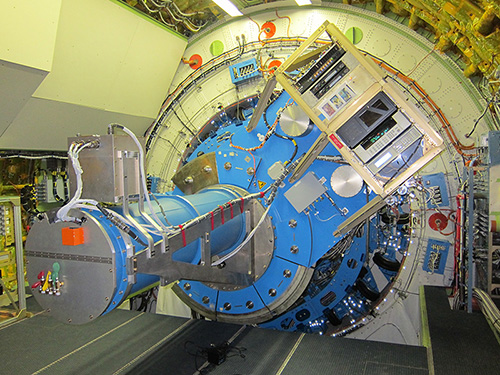
Echelon-Cross-Echelle Spectrograph (EXES)
Facility Class Science Instrument
Principal Investigator:
Matthew J. Richter
Department of Physics, University of California Davis, Davis, CA, USA
EXES operated in the 4.5 – 28.3 μm wavelength region, at high (R ≈ 50,000 – 100,000), medium (R ≈ 5000 – 20,000) and low (R ≈ 1000 – 3000) spectral resolution. The instrument used a 1024x1024 Si:As detector array. High resolution was provided by an echelon—a coarsely-ruled, steeply-blazed aluminum reflection grating—along with an echelle grating to cross-disperse the spectrum. The echelon could be bypassed so that the echelle acted as the sole dispersive element. This resulted in single order spectra at medium or low resolution depending on the incident angle.
One of the greatest advantages of SOFIA was its ability to study molecules that are blocked by the Earth's atmosphere. In particular, the high spectral resolution provided by EXES enabled the study of molecular hydrogen, water vapor, and methane from sources such as molecular clouds, protoplanetary disks, interstellar shocks, circumstellar shells, and planetary atmospheres.
Primary Reference
Use when citing SOFIA/EXES results.
"EXES: The Echelon-cross-echelle Spectrograph for SOFIA", Richter, et al., 2018, JAI, 7, 1840013.
DOI:
10.1142/S2251171718400135
; ADS Bibliographic Code:
2018JAI.....740013R
Handbook for Archive Users
Tutorials
Data inspection with python
Python tutorial on plotting and analyzing grism data.
Telluric Correction with python
Retrieving and plotting atmospheric models from the the Planetary Spectrum Generator (PSG), manipulating and tuning models, subtracting them from grism data.
Velocity Shift
Python code for estimating the velocity shift of spectral lines as a result of the motion of Earth and a target.